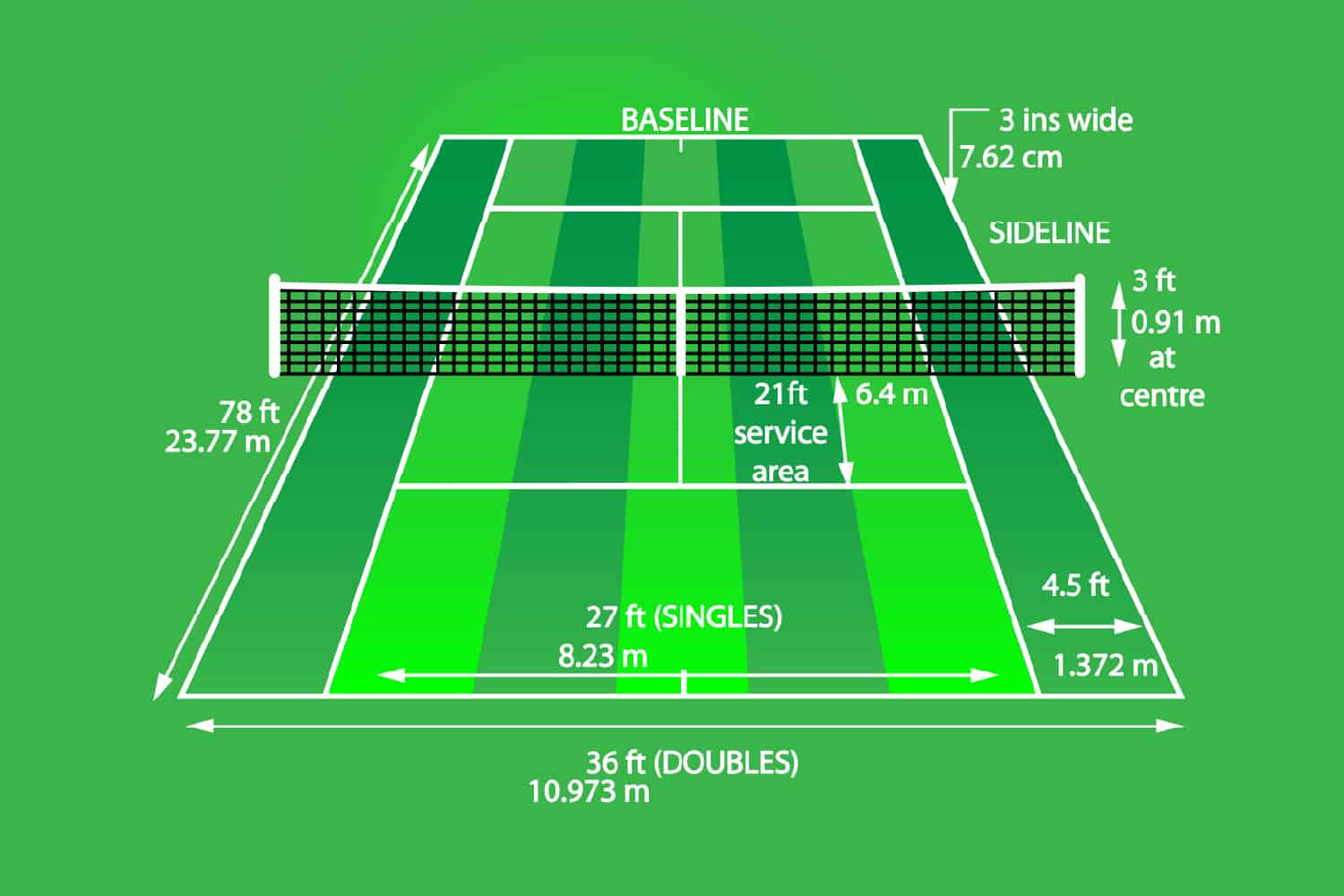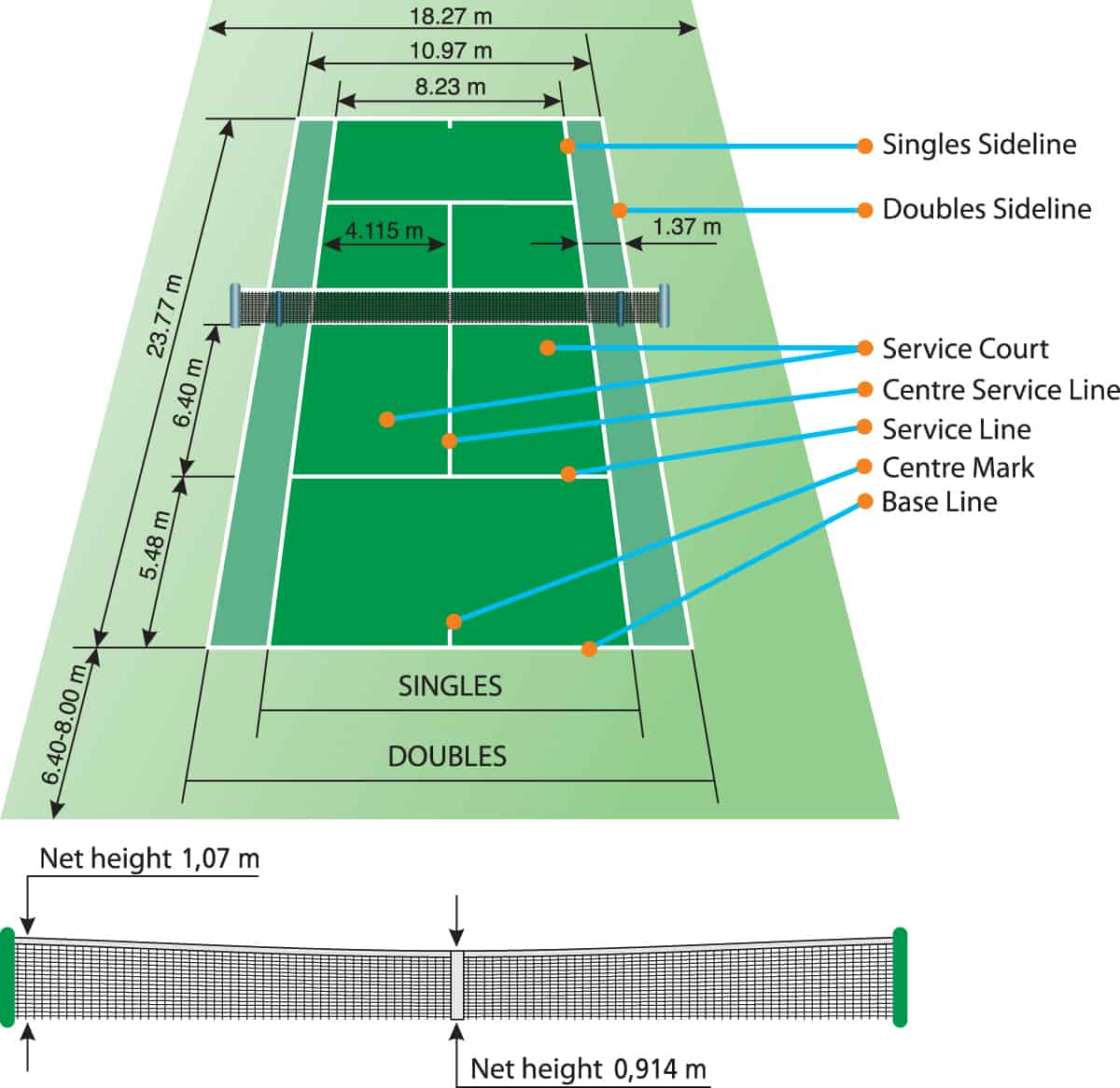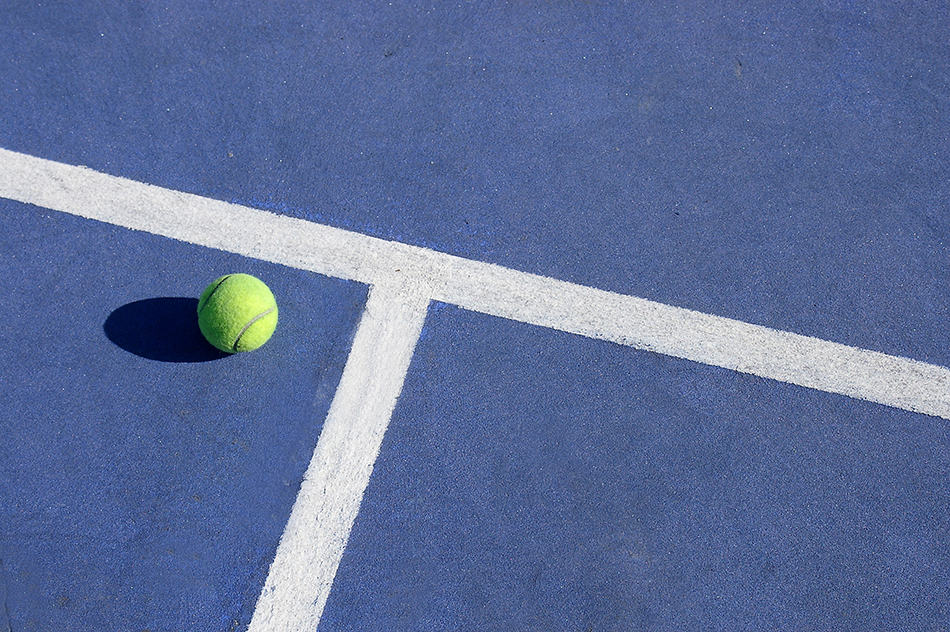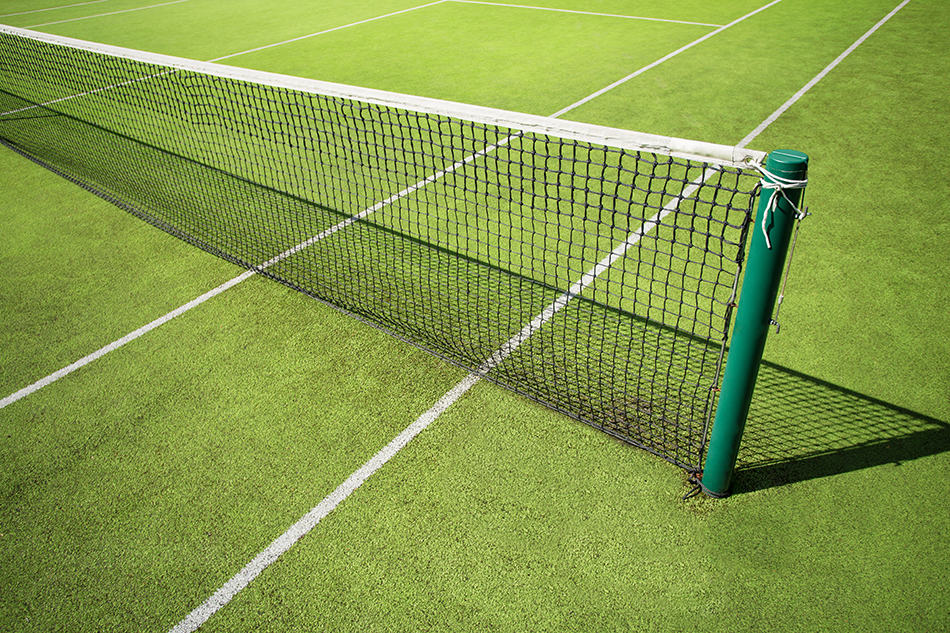Can you believe that the surface area of the tennis court at your local tennis club is the same size as the Center Court at Wimbledon (minus the 15,000-seat capacity)? Well, it’s true.
All official ATP and ITF tournament courts adhere to exact standard dimensions for singles and doubles games, regardless of the type of court – grass, clay, or hard surfaces. If you’re lucky enough to have a private court at home, though, it can be any size you wish.
The markings on a tennis court can be somewhat confusing. This brief explanation of a tennis court’s layout clarifies what each line and zone represent.
Understanding them and the court’s dimensions can help you better grasp the workings of the game and practice strategies to become a better player.
If you’re new to tennis or you’re not a player but enjoy watching it, this guide will add to your general enjoyment of the game.
According to the International Tennis Federation (ITF), the length of a tennis court is 78 feet, marked by the sideline. Additionally, the singles court baseline measures 27ft in width, while the doubles court baseline is 36ft wide.
Here is a diagram that illustrates the dimensions of a tennis court.
Keep reading to explore the specific parts of a tennis court with specific sizes and dimensions.
Boundary Lines
The tennis court’s boundary lines mark the area of play. There are four boundary lines (2 baselines and 2 sidelines):
The baseline is located at the back of the court, closest to the back wall. It runs parallel to the net and represents the overall width of the tennis court, measuring 36ft wide. You’ll see further that there is a difference in the baseline measurements depending on whether a court is designated for singles or doubles games.
The sideline runs perpendicular to the net and spans the total length of the court. It measures 78ft in length.
During a game, the ball should land within the boundary lines to be in play.
The Net
The play surface is split in half by the net, which is 3ft high in the center and 3.5ft high at the posts. It’s 42ft wide, spanning the entire width of the tennis court’s area of play, plus an extra 4 inches on either side where it is attached to the posts.
The Dimension Differences Between Singles and Doubles Court
Most tournament-level tennis courts accommodate singles and double games. It may appear that the doubles game you’re watching is being played on a different court from the singles game you saw yesterday, but both styles of the game are actually being staged on the same court.
So, where’s the difference?
It’s the width of the baseline markings, which change the surface area of play and designate a court suitable for singles or doubles games.
The singles court baseline is 27ft wide, compared to the doubles court baseline width, which is 36ft wide.
Both singles and doubles games are played along the entire length of the tennis court, marked by the sideline measuring 78ft.
The total surface area for the singles court is, therefore, smaller at 2,106sq ft.
The total surface area of the doubles court is 2,808sq ft and includes the doubles alleys.
Notice that the doubles court uses the whole play surface of the tennis court and has its exact measurements.
Doubles Alleys
The doubles alleys are the small strips of play area created by the difference in width between the singles court and doubles court. Remember, both courts are the same length but have different widths.
There are two doubles alleys in each half of the tennis court, each being 39ft long and 4.5ft wide, giving 175.5sq ft of extra play surface on the doubles court.
Service Line
The service line marking is located 21ft from the net and 18ft from the baseline and runs parallel with both. It’s the same width as the singles baseline (27ft). The service line joins the sidelines to form the forecourt.
During a serve, the ball must bounce before the service line, within the service box, to be considered “in”. The service line marks the end of the service boxes.
Center Service Line
The center service line is perpendicular to the net and the service line and runs parallel to the sidelines. It measures 21ft long and is found on each side of the net.
The center service line joins the net and service line to form the service boxes.
Service Boxes
The tennis court has four equal-sized service boxes, with 2 in each half of the court. Each service box is 21ft long and 13.5ft wide, with a total area of 283.5sq ft.
No Man’s Land
The biggest box on the tennis court, known as No Man’s Land, is 18ft long and 27ft wide. There’s a No Man’s Land in each half, each occupying a total surface area is 486sq ft between the service line and baseline.
No Man’s Land is considered the most challenging area to play in. A player who finds themselves in it for too long may find it hard to react in a timely and controlled way to their opponent’s shots. For this reason, players are strongly encouraged to avoid being on this part of the court for an extended period during play.
Center Mark
The center mark is the shortest line on the court, measuring just 4 inches in length. It’s perpendicular to and is right in the middle of the baseline. During a serve, a tennis player will stand to the right or left of the center mark, then hit the ball, so it travels diagonally, landing in the correct service box of their opponent.
Additional Tennis Court Dimensions to Consider
Most tennis courts also have extra space around them that extends beyond the sideline and baseline boundaries. This space serves various functions, including being a run-off area, so players don’t crash into the fence or barrier. It’s also space for the umpire, line judges, and ball boys to observe the game.
Unlike the area of play, the run-off area dimensions are not strictly defined, but official tennis bodies issue recommendations.
The run-back distance (area behind the baseline) should extend between 21ft to 27ft.
The side-run distance (area to the left and right of the sideline) should extend between 12ft to 18ft.
Furthermore, for indoor venues, an overhead clearance of at least 40ft is recommended.









